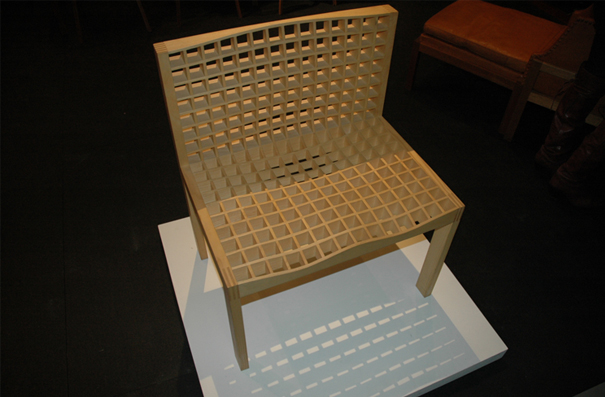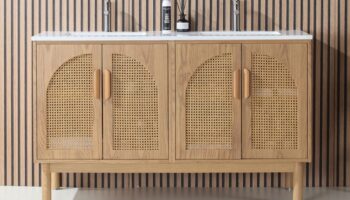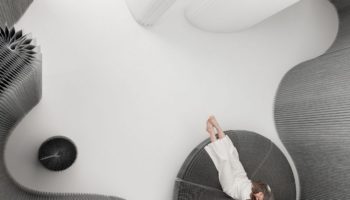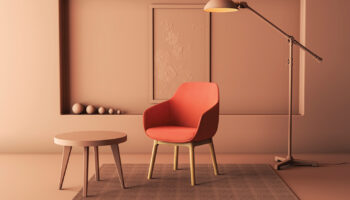Live at Design Miami: The Grid Chair
The Dansk Mebelkunst Gallery is showing Boris Berlin and Poul Christiansen's Grid Chair, a one-of-a-kind (literally, there's only one) easy chair made from one plank of ash assembled into a matrix pattern.
Grid Chair. Designed by Boris Berlin and Poul Christiansen. Manufactured by Komplot. Exhibited via the Dansk Mebelkunst Gallery.
Made by Danish furniture and design company Komplot, the Grid Chair interprets the human body, breaking its shape down into a skeleton. In this way, the chair is reminiscent of the Bauhaus-reducing complex forms into their basic constituents. Of course, what is not there in the Grid Chair is just as important as what is; the negative spaces invite speculation and indicate the many facets of the body that cannot be represented. The consequent shadows reference the human form's mystery. But let Berlin and Christiansen explain it via their design poetry: "The transformation of the plank into the symbol of the chair/The geometrical, infant archetype of the chair/Icon of the chair's side elevations tied together by a wooden grid that remembers the human body/Machine-made, cubistic clarity transformed by the craftsman into a monument to the body." Constructing the Grid Chair was no easy task: Komplot had to partner with cabinet makers Jacob Petersen, Kasper Holst Pedersen, Kim Dissing, and Claus Hjort Hansen.




Berlin and Christiansen's work belongs at Dansk Mebelkunst, where it can cohabitate with such fine predecessors as Bruno Mathsson and Alvar Aalto, both of whom played with grids. There's no better design archetype than the grid, although "The secret of a grid’s success is not so much its structure as the imagination with which it is used." The Grid Chair emblematizes Allen Hurlburt's dictum, as its built-in curves transcend the structure's rigidity. That Berlin and Christiansen made the grid flow is the secret to the Grid Chair's appeal: it seems to say that the human body, however ordered, cannot be contained.




Leave a Reply